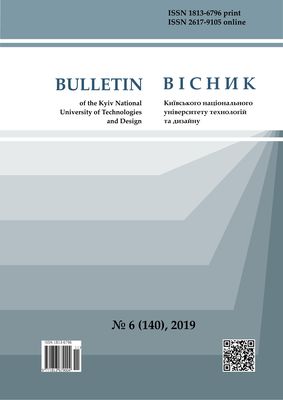PHYSICALCHEMICAL AND IR-SPECTROSCOPIC RESEARCH OF NEW FATLIQUORING PREPARATIONS
DOI:
https://doi.org/10.30857/1813-6796.2019.6.8Keywords:
leather production, fatliquoring preparations, properties, chemical nature, IR spectroscopyAbstract
Study of physicochemical properties, chemical nature, and interaction with collagen of new fatliquoring preparations of various origins to identify among them effective reagents for resource-saving technologies focused on the production of leather products with predictable properties to reducing the harmful load on the environment. To determine the basic physicochemical properties and chemical nature of fats, traditional and modern physicochemical methods of analysis (titrimetric, viscometric, infrared spectroscopy) were used, as well as visual assessment. The paper presents the results of determining the chemical nature and physicochemical properties of new fatliquoring preparations - industrial products of natural and synthetic origin: Synthol EW321, synthesized based on emulsified synthetic fats; Synthol MC derived from phosphated synthetic fats; Sulphirol C, based on sulfitated fish oil, is resistant to electrolytes; semi-synthetic composition CMX-473, obtained on the basis of sulfonated and sulfated fats; synthetic electrolyte-resistant composition CMX-470, obtained on the basis of sodium salts of alkyl succinic acid and synthetic fats. IR-spectroscopic studies of the fibrous collagen preparation treated with these fatliquoring preparations were carried out. The nature and change in the optical density of the absorption bands of the functional groups of the protein depending on the type of fat used is determined. It was found that the studied reagents interact mainly with nitrogen-containing and hydroxyl groups of collagen. Peculiarities of interaction in the “collagen - chemical reagent” system in the presence of fatliquoring preparations of various origin intended for processing the leather are investigated. The results of the work will contribute to the expansion of the assortment and the justified use of effective chemical reagents in innovative technologies for the production of leather.

